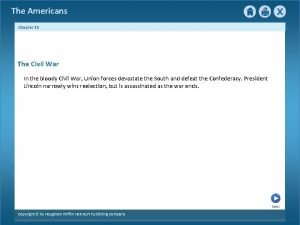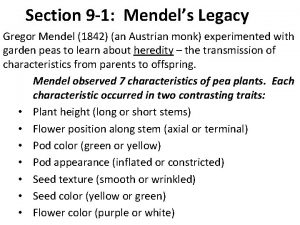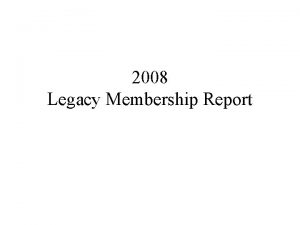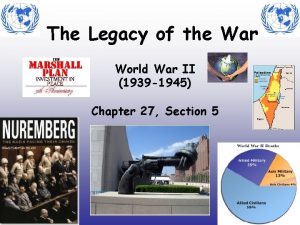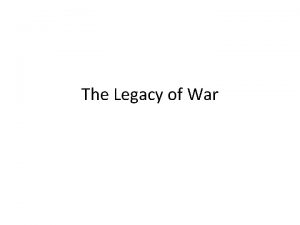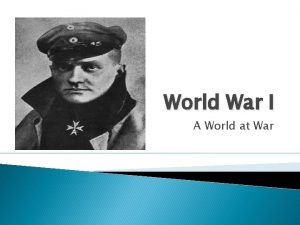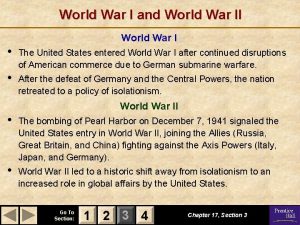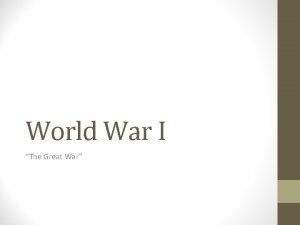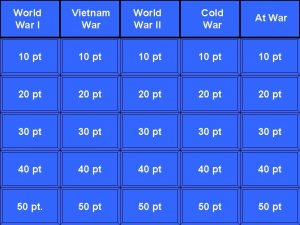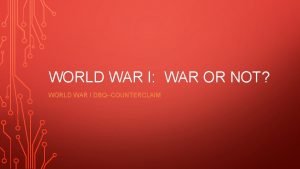WORLD WAR II THE LEGACY OF THE WAR










- Slides: 10

WORLD WAR II THE LEGACY OF THE WAR

The War’s Human Cost • No war has claimed so many lives or caused so much destruction as World War II. About 20 million soldiers were killed, and millions more were wounded. • Soviet Union suffered the greatest losses, with at least 7. 5 million military deaths and another 5 million people wounded. • More than 400, 000 American soldiers died and more than 600, 000 were wounded. • Civilian casualties also numbered in the millions. Both the Allied and Axis powers had fought a war without boundaries. They bombed cities, destroyed villages, and brought destruction to civilian life. • The war also created an enormous wave of refugees. They included orphans, prisoners of war, survivors of Nazi concentration camps, and those who fled advancing armies.

The War’s Human Cost

Economic Winners and Losers • The war left many of the world’s economies in ruins. Only the United States—where no major battles were fought (except for Pearl Harbor)— came out of the war with a strong economy. • The boom in industry during the war had pulled the nation out of the Great Depression. With the world’s strongest economy, the United States set out to help rebuild the shattered economies of Europe and Japan. They introduced programs that put Japan on the road to recovery.

Economic Winners and Losers • In 1948, Congress approved the Marshall Plan to help boost the economies of Europe. The plan was named after the man who came up with it, Secretary of State George C. Marshall. • Under the plan, the United States gave more than $13 billion to help the nations of Europe get back on their feet.

Changes in American Society • The country had to deal with the return of millions of soldiers. With so many servicemen suddenly back home, the competition for jobs and education was great. • The government responded by passing a law that is commonly known as the G. I. Bill of Rights or G. I. Bill. This measure provided educational and economic help to veterans. The government paid for returning soldiers’ schooling and provided them with a living allowance. More than 7. 8 million World War II veterans attended school under the G. I. Bill. • The Truman administration took steps to address the country’s housing shortage.

The Nuremberg Trials • As the United States dealt with important matters at home, the nation also joined the world in dealing with war crimes. The international community put together a court to try Nazi leaders for their role in World War II. The trial opened in November 1945 in Nuremberg, Germany. • Crimes referred to the Nazis’ murder of millions of Jews and others. After nearly a year-long trial, 19 of the defendants were found guilty. Twelve were sentenced to death. About 185 other Nazi leaders were found guilty in later trials. The Nuremberg trials upheld an important idea: People are responsible for their actions, even in wartime.

Creation of the United Nations • The war helped to establish another principle—nations must work together in order to secure world peace. The outbreak of World War II demonstrated the weakness of the League of Nations, the international peacekeeping body created after the First World War. • In April 1945, delegates from 50 nations— including the United States—met in San Francisco to discuss creating a new international peace organization. In June, all 50 nations approved the charter creating the new peacekeeping body known as the United Nations, or UN.

International Tensions • The horrors of World War II had caused many countries to work together toward lasting peace. However, tensions still arose among nations in the wake of the war. For example, in 1948 the United Nations helped found the nation of Israel to create a homeland for the Jews in Palestine. Fighting immediately broke out as neighboring Arab nations attacked Israel. In addition, colonies around the world began fighting for their independence. The United States, however, was more concerned with the rise of the Soviet Union.

International Tensions • Despite suffering so much damage and loss of life, the Soviet Union emerged from World War II as a great power. It had conquered much of Eastern Europe. During the war, the United States and the Soviet Union had been uneasy partners. After the war, Stalin angered the United States by breaking a wartime promise to promote democracy in the nations he had occupied in Eastern Europe. Instead, Stalin forced the countries to live under Communist regimes. The Soviet Union wanted to spread communism. The United States wanted to halt it. This led to future conflict. Finally, the end of the war marked the beginning of the atomic age. The atomic bombs dropped on Japan showed the world a powerful new weapon.


